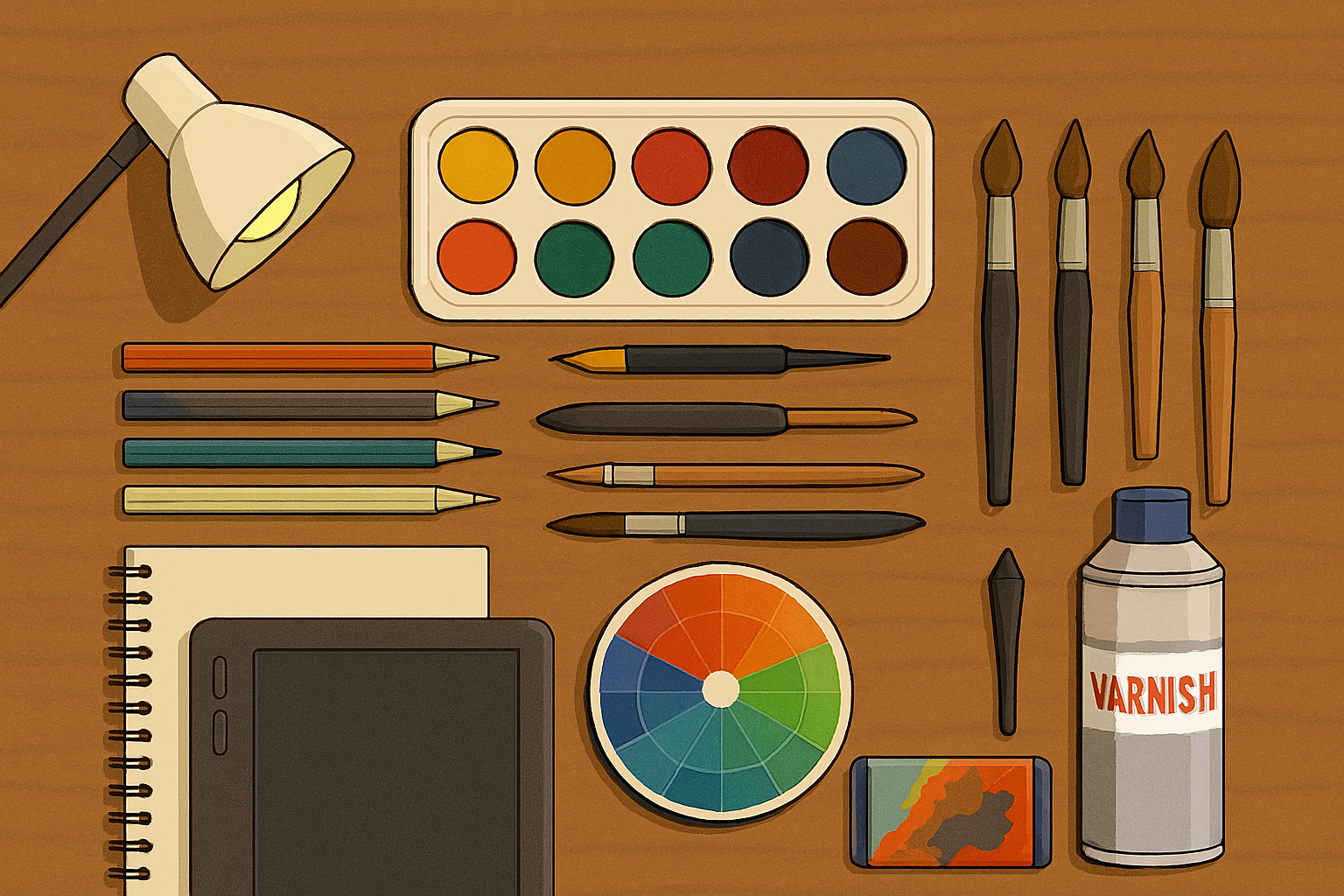Whether you’re a painter, illustrator, sculptor, or digital creator, having the right tools can make all the difference in bringing your vision to life. The essentials go beyond just brushes and pencils — they include materials, equipment, and resources that support your creative process from concept to completion. Here’s a guide to six categories of tools that every artist should consider adding to their creative toolkit.
Quality Drawing and Painting Supplies
The foundation of most visual art lies in the materials you use to create it. High-quality supplies not only improve the look of your work but also make the creative process more enjoyable.
- Graphite pencils in various hardness levels for sketching and shading
- Professional-grade colored pencils or markers for vibrant illustrations
- Acrylic, watercolor, or oil paints depending on your preferred medium
- A range of paintbrushes for different textures and strokes
- Durable sketchbooks and canvases for practice and finished pieces
Investing in reliable materials ensures that your art retains its quality over time and allows you to experiment with different techniques confidently.
Essential Digital Art Tools
For artists working in the digital space, the right hardware and software are just as important as traditional materials. These tools open up endless creative possibilities.
- Drawing tablet or pen display for precise control
- Stylus with customizable pressure sensitivity
- Professional software like Adobe Photoshop, Illustrator, or Procreate
- High-resolution monitor for accurate color representation
- External storage or cloud backup for safeguarding your work
Digital tools give artists the flexibility to edit, experiment, and produce work for both print and online platforms without sacrificing quality.
Lighting and Workspace Setup
A well-lit, organized workspace can dramatically improve your productivity and comfort. Proper lighting ensures accurate color perception and reduces eye strain.
- Adjustable desk lamp with daylight-balanced bulbs
- Overhead lighting to evenly illuminate the room
- Ergonomic chair to support long creative sessions
- Spacious desk or easel for working comfortably
- Storage solutions for organizing tools and materials
Creating a dedicated, well-lit space helps you focus on your art and maintain a healthy, sustainable workflow.
Reference and Inspiration Resources
Even the most imaginative artists benefit from reference materials and inspiration sources. These tools help refine skills and spark new ideas.
- Art books and magazines featuring techniques and styles
- Online image libraries and stock photo sites
- Anatomy guides for figure drawing
- Color theory charts and swatches
- Museum visits or virtual gallery tours
Having a variety of references at your fingertips can push your creativity further and help you tackle challenging subjects with confidence.
Tools for Experimentation and Mixed Media
Exploring new mediums and techniques can lead to unexpected breakthroughs in your art. Keeping a selection of experimental tools encourages creative growth.
- Ink pens and calligraphy tools for line work
- Pastels and charcoal for expressive textures
- Collage materials like fabric, paper, and found objects
- Stencils and stamps for pattern-making
- Spray paints or airbrush kits for unique effects
Experimenting with different tools can help you discover new styles and keep your artistic practice fresh and exciting.
Maintenance and Preservation Equipment
Taking care of your tools and finished pieces ensures they last for years to come. Proper maintenance also saves money in the long run.
- Brush cleaners and conditioners for paintbrushes
- Protective varnishes for paintings
- Fixatives for charcoal or pastel drawings
- Archival storage boxes and portfolios
- Cleaning cloths and compressed air for digital equipment
By maintaining your tools and preserving your artwork, you protect both your investment and your creative legacy.



